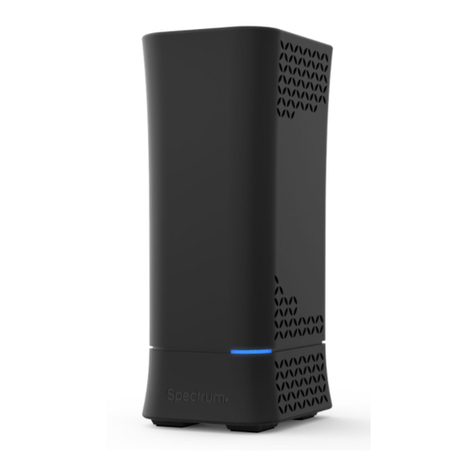
RAC2V1A Router User Guide 3
6. Advanced Configuration Options................ 20
6.1. Configuring DHCP ................................................................................... 20
6.1.1. Configuring DHCP for IPv4........................................................... 20
6.1.2. Configuring DHCP for IPv6............................................................ 21
6.1.3. Adding and Deleting Reserved DHCP Clients......................... 21
6.2. Selecting the NAT Mode ........................................................................22
6.3. Setting the Wireless Mode ....................................................................22
6.4. General Firewall Configuration Settings.......................................... 23
6.5. Port Forwarding....................................................................................... 24
6.6. Configuring DMZ for Gaming or Conferencing Applications... 25
6.7. Viewing Network System Information ............................................. 26
6.8. Restarting the Router............................................................................. 26
6.9. Viewing the System Logs ..................................................................... 26
6.10. Setting Up DDNS ..................................................................................... 26
6.10.1. Requirements......................................................................................27
7. Router Configuration Screen Descriptions 28
7.1. Basic Setup ................................................................................................ 29
7.1.1. Basic Wireless Settings .................................................................. 29
7.1.2. WPS Settings ...................................................................................... 31
7.2. WAN Setup ................................................................................................ 32
7.2.1. Dynamic Configuration Settings (IPv4) ................................... 32
7.2.2. Static IP Connection Type (IPv4) ............................................... 34
7.2.3. DNS Settings...................................................................................... 35
7.2.4. Dynamic Configuration Settings (IPv6) ................................... 36
7.2.5. Static IP Connection Type (IPv6) ............................................... 37
7.3. LAN Setup .................................................................................................. 39
7.3.1. LAN Settings (IPv4) ........................................................................ 39
7.3.2. LAN Settings (IPv6)......................................................................... 42
7.3.3. Client List ............................................................................................44
7.4. Wireless....................................................................................................... 46
7.4.1. Basic Setup......................................................................................... 46
7.4.2. Advanced Settings........................................................................... 50
7.4.3. Associated Stats ............................................................................... 53
7.4.4. Airtime Fairness ................................................................................ 54
7.4.5. QoS Classification ............................................................................ 56
7.4.6. Log......................................................................................................... 58
7.5. Firewall ........................................................................................................ 59
7.5.1. Firewall Settings ............................................................................... 59






























